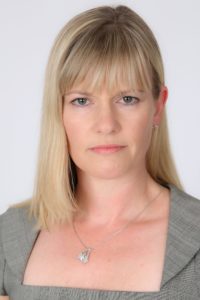For this month’s Three-year track record, Juliet Schooling Latter, research director, FundCalibre, looks Stateside, and the FTF Martin Currie US Unconstrained.
It has been a painful start to the year for US equities. The S&P 500 recorded its worst January since 2009, before officially hitting correction territory in February – with growth stocks in the eye of the storm due to rising rates and a slowing economy*.
Russia’s invasion of Ukraine has also applied new pressure to the global system at a time when economies were trying to recalibrate.
It does seem like we are finally entering the new economic environment many commentators were predicting when markets kept grinding ever higher in a pre-Covid world. The days when markets are underpinned by central banks are over.
Could stock dispersion be the order of the day from here? A measure of the potential risk/return outcomes for individual stocks, figures from BlackRock already show stock dispersion sits well above its average since the Global Financial Crisis*.
That may not be music to the ears of many US investors. As a multi-asset team, we know from experience how hard it is to consistently beat the US market. Finding a high class stockpicker is anything but easy, but this month’s fund may well offer the solution to that conundrum.
The FTF Martin Currie US Unconstrained fund was taken over by Robbie McNab and Zehrid Osmani in 2019 with its investment approach subsequently updated. It is a very high conviction concentrated portfolio of just 20 to 25 holdings and has a long term (5-10 year) investment time horizon, which cuts out short-term noise from the market.
Zehrid is head of the Global Long-Term Unconstrained (GLTU) team at Martin Currie. He joined the firm in May 2018 from BlackRock, where he held a number of senior roles from January 2008. Robbie is a portfolio manager on the same unconstrained team, having joined Martin Currie back in 2007.
The fund invests in medium and large companies with low gearing. The team believe companies with high and sustainable returns on invested capital (ROIC) deliver superior outcomes for long-term investors.
The investment philosophy is that proprietary fundamental research can identify long-term value-creating companies undervalued by the market.
This is based on three factors: the market is myopic, and fades returns of quality growth companies too fast; the group’s fundamental research is able to identify these companies; and that value creating companies compound returns over the long-term.
The three-stage process begins with idea generation – the entire GLTU team is involved here with each member having sector specific research capabilities. They screen for companies that have generated a ROIC in excess of their Weighted Average Cost of Capital (WACC). They also screen for a guideline market cap of above $3bn, low gearing and the level of goodwill on the balance sheet. This process generates an investible universe of approximately 150 stocks.
Stocks passing the identification process progress to a fundamental analysis, where the team use eight criteria to examine the quality and sustainability of the business model, these are based on key aspects which are important to investors – the most important of which being valuation.
Numerous data inputs are used at this stage including accounting diagnostics, scenario and company lifecycle analysis. The research also risk assesses each company against four key categories, ranking them 1 (low risk)to 5 (highest risk) on each. These are industry, company, governance & sustainability and portfolio risks.
The final stage is portfolio construction, with initial position sizes between 2-5 per cent. Whilst the process is based on individual stock selection, the managers do like certain themes: the future of technology; resource scarcity and demographic change. The future technology portion covers such areas as security and defence, cloud, data and IT and gaming. The resource scarcity theme covers climate change, alternative energy and electric vehicles.
The portfolio currently has 21 holdings, the largest of which is tech firm NVIDIA (8.6 per cent). ResMed and Estee Lauder (7.8 and 7.6 per cent respectively) complete the top three. Ongoing charges stand at 0.86 per cent**.
Since the new management team took over in 2019, this fund had been a constant outperformer until the start of this year when quality growth companies took a hit in the new world of rising rates and inflation. Ultimately, the team are proven stockpickers with a process which has shown itself to be repeatable in other parts of the world. The fund cuts out short-term noise and focuses on a longer time horizon, and we believe it is well placed to produce strong returns in this environment, particularly if stock dispersion is here to stay.
Past performance is not a reliable guide to future returns. You may not get back the amount originally invested, and tax rules can change over time. Juliet’s views are her own and do not constitute financial advice.
*Source: BlackRock – Taking stock: Q2 2022 equity market outlook
**Source: Provider factsheet at 28 February 2022
































